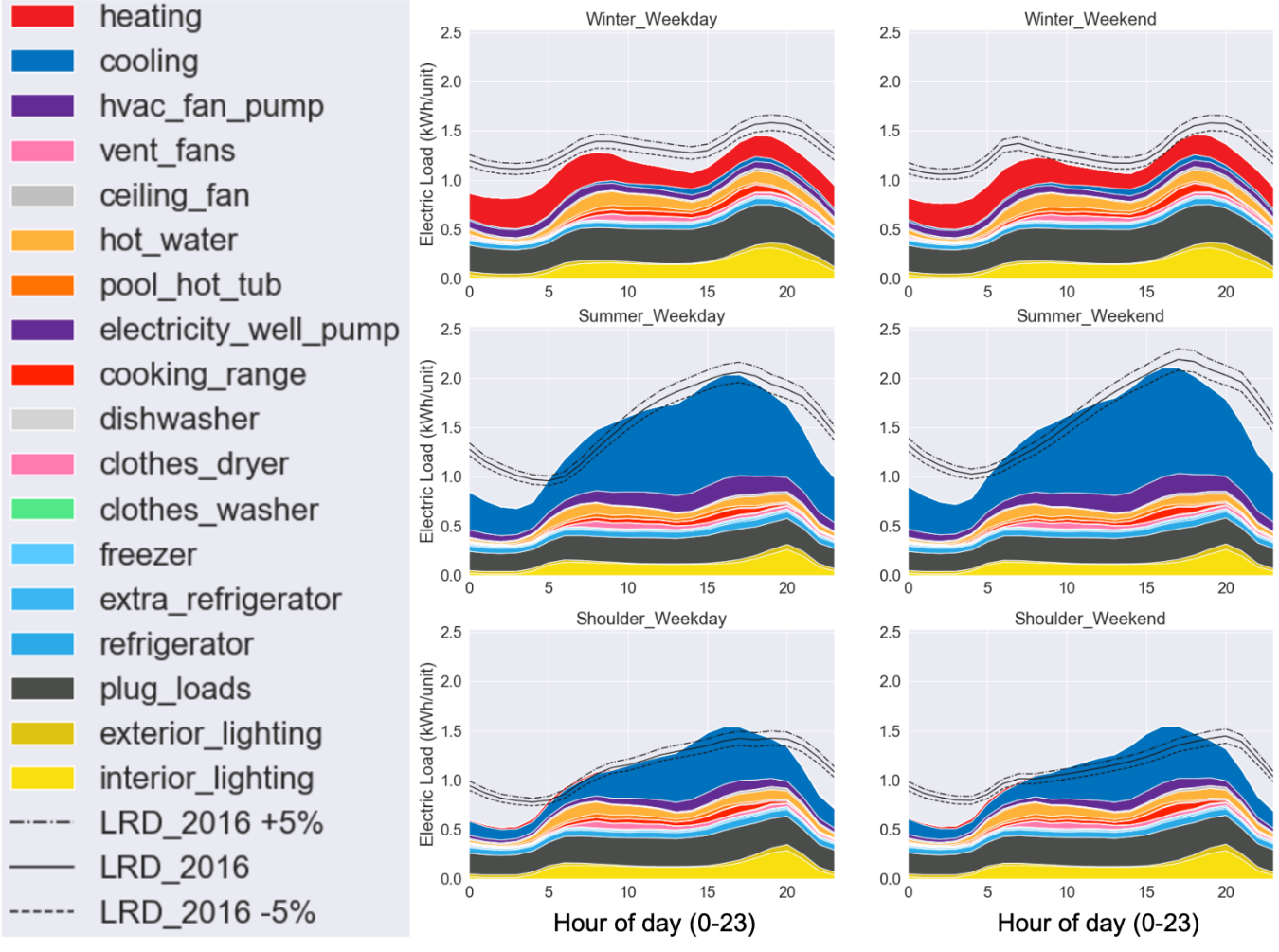Researchers are combining sub-metering with building stock modeling to create hourly electricity end-use profiles that match regional grid demands.
December 4, 2018
Lead Performer: National Renewable Energy Laboratory – Golden, CO
Partners:
-- Lawrence Berkeley National Laboratory – Berkeley, CA
-- Argonne National Laboratory – Lemont, IL
-- EPRI – Charlotte, NC
-- NEEP – Lexington, MA
DOE Total Funding: $9 million
Cost Share: $2.1 million
Project Term: October 1, 2018 – September 30, 2021
Funding Type: Lab Award
Related Projects: ResStock, EnergyPlus, Scout
Project Overview
End-use load profiles—hourly or sub-hourly electricity use patterns disaggregated into end-uses such as lighting, cooling, and computing—are used by utilities to design rates and inform distribution and resource planning, and by state and local energy commissions to inform both planning and regulation.
Previous attempts to develop end-use load profiles have used physical submetering. Because of the cost of this approach, the resulting profiles were based on small samples, had little geographic coverage, and were updated sufficiently infrequently to eventually become outdated.
This project will use a hybrid approach that combines blends the ground truth of submetering with the reach, cost-effectiveness, and granularity of building stock modeling to deliver a nationally comprehensive dataset at a fraction of the cost of historical methods. NREL and LBNL will work with regional energy-efficiency organizations, EPRI, and utilities to collect and evaluate end-use and whole-building load profile data from a wide range of existing sources and address critical gaps with additional data collection. This project will produce a set of load profiles that will be published on Data.gov and the EPRI Load Shape Library along with a user guide for utilities, policymakers, technology developers, and researchers. This dataset will support analyses that further the adoption of grid-interactive and efficient buildings.
The team will use the ResStock and ComStock stock modeling methodologies. Traditional stock models—models of entire building stocks used in developing EE codes, programs, and research and product portfolios—consist of a single prototype building for each building type (e.g., residential, office, school), climate zone, and vintage along with a floor-area weighting factor. ResStock and ComStock use distributions of building asset and operational characteristics to replace each singleton model with a sample of models, improving stock modeling robustness.
This project will calibrate ResStock and ComStock models–calibration is the tuning of model input parameters so that simulation outputs match measured data–so that their results match hourly electricity use profiles as they are observed by regional grids. As a secondary outcome and benefit of this project, calibrated ResStock and ComStock models able to support TSV (Time Sensitive Valuation) on individual EEMs and EEM packages, effectively making traditional stock modeling applications like code and utility program development and research and product portfolio management TSV-aware.
Contacts
DOE Technology Manager: Monica Neukomm
Lead Performer: Eric Wilson, NREL

